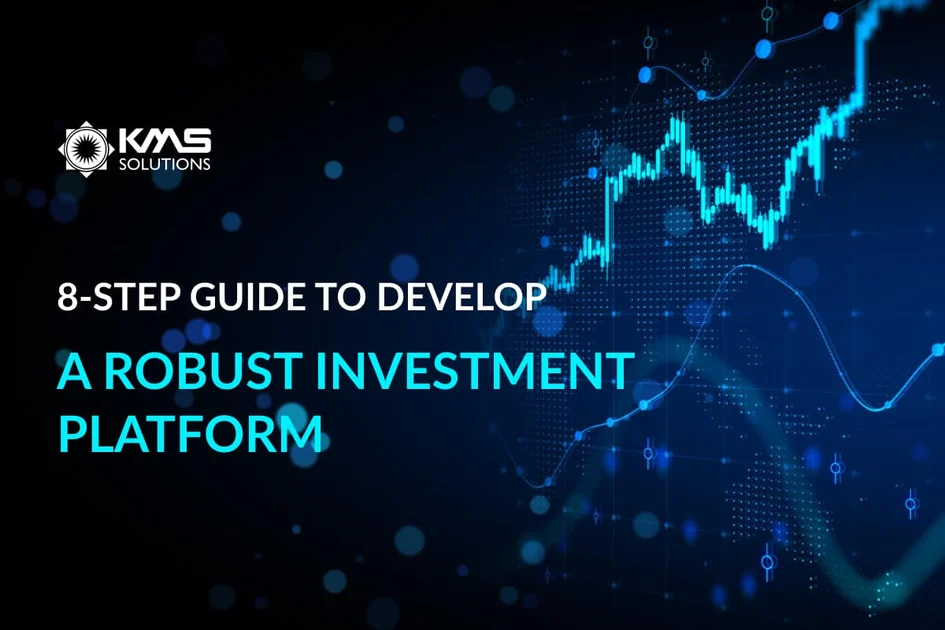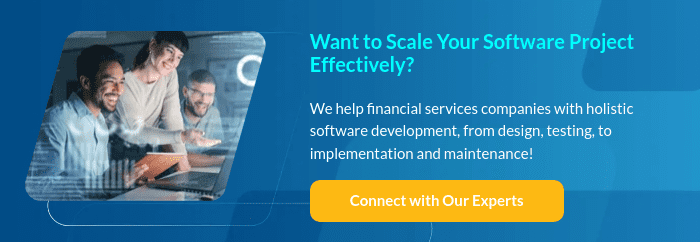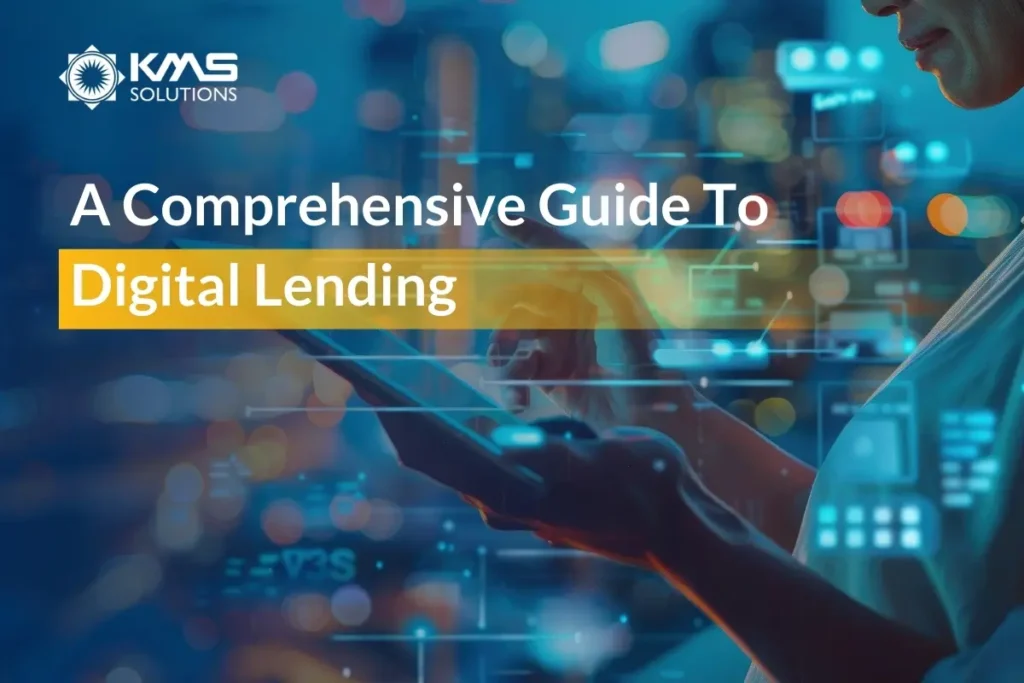The times when investment opportunities were limited to institutional funds and large brokerage corporations are long gone. Today, investors are more tech-savvy and prefer to manage their investments on the go. Therefore, an increasing number of Fintech entrepreneurs in Australia are planning to develop a robust investment platform to catch up with the market trends and meet customer expectations.
However, the competition for investment platforms in the market is overwhelming! To help businesses develop an investment app that stands out, this article aims to give comprehensive knowledge about differentiating different kinds of investment platforms and how to build an outstanding one!
Different Types of Investment Platforms
Before kicking off the digital investment platform development project, it’s essential to consider the type that aligns with your business vision. This decision not only helps define the platform’s functionality but also ensures software can meet the specific needs of your target users.
Here are some common investment software types to consider:
1. Brokerage Platforms
Brokerage trading platforms, also known as ‘investment brokerages’ or ‘online brokers,’ are software solutions designed to facilitate the buying and selling of financial instruments such as stocks, bonds, and mutual funds. These platforms act as intermediaries, connecting investors with the financial markets and providing features to execute trades, analyze market data, and manage investment portfolios.
Online brokers provide direct access to a diverse array of investment possibilities, empowering users to make trading decisions independently. Since this software offers more control and flexibility, it can appeal to experienced investors.
Examples of best Australian investment brokerages include CMC Markets, Interactive Brokers, IG, CommSec, and Westpac.
2. Peer-to-Peer Lending Platforms
Peer-to-peer (P2P) lending allows individuals to secure loans directly from other individuals, such as banks or credit institutions, bypassing traditional financial institutions as intermediaries.
Additionally, P2P lending platforms utilize various risk assessment methods to analyze the creditworthiness of borrowers. These assessments aid investors in making informed lending decisions by considering the risk profiles of potential borrowers.
P2P lending is also known as “social lending” or “crowd lending.” It has only been around since 2005, but the crowd of providers offering P2P loans in Australia already comprises MarketLend, MoneyPlace, OurMoneyMarket, and Plenti.
3. Robo-Advisors
Robo-advisors are automated investment management platforms that provide automated, algorithm-driven financial planning and investment services without human supervision.
Investment management robo-advice is considered a groundbreaking development in formerly exclusive wealth management services, catering to a broader audience at a more affordable cost compared to traditional human advisory services.
The top robo-advisors should provide an easy account setup process, robust goal planning, account services, efficient portfolio management, and security measures, and offer low subscription fees for users. Besides Betterment and Wealthfront, some examples of well-known robo-advisors in Australia include Raiz, Spaceship Voyager, Sixpark, etc.
4. Cryptocurrency Exchanges
One in four Australians own crypto, as per a Statista survey conducted from 2019 to 2022. Similar to a broker, cryptocurrency exchanges allow users to buy and sell digital currencies like Bitcoin, Ethereum, Ripple, and others. These platforms also come in centralized and decentralized formats:
- Centralized exchanges adhere to financial regulations from governmental authorities (such as The Australian Securities and Investments Commission (ASIC))
- Decentralized exchanges are unregulated online exchanges operated on distributed nodes owned by users and lacking a central governing authority.
Some renowned cryptocurrency exchanges include Binance, Kraken, and eToro.
5. Real Estate Crowdfunding Platforms
These platforms enable individuals to invest in a wide range of real estate projects, such as residential properties, commercial buildings, and land development.
Investors in the real estate sector have adopted crowdfunding platforms as an alternative to more traditional means of financing investments. These solutions provide real estate management services and opportunities for passive income, capital appreciation, and diversification.
The top equity crowdfunding platforms in Australia are Birchal and Equitise, which both provide opportunities for individuals, not solely professional investors, to invest in Australian firms.
6. Micro-Investing Platform
Micro-investing platforms are developed to enable individuals to invest with minimal capital. These platforms are often designed with user-friendly interfaces, offering users access to various investment options like stocks, exchange-traded funds (ETFs), and bonds.
Some of the most popular types of micro-investing platforms include crypto, crowd investing, and platforms that comply with MiFID II regulations. Besides, key technologies used in micro-investing platforms include Artificial Intelligence (AI), blockchain, big data analytics, cloud computing, etc.
Must-have Features of an Effective Investment Platform
Developing an investment platform necessitates meticulous planning and integration of various technologies and systems. Additionally, prioritizing user experience (UX), ensuring security, and adhering to regulatory compliance are crucial aspects throughout the development stages.
Here’s a set of core features of investment platforms that Fintech companies should consider first:
1. Registration and Onboarding
Not every customer is The Wolf of Wall Street: some of them may require a trial account to refine their investment skills. Onboarding is an introductory guide that helps explain how the app operates. The onboarding stage holds particular importance due to the formalities involved in the registration process, such as electronic Know Your Customer (e-KYC) and Anti-Money Laundering (AML) procedures.
The eKYC process involves verifying users, gathering documentation, and conducting background checks online to ensure that only authenticated investors can join your investment system. Implementing KYC is essential for platform compliance with required security regulations and effective risk management. It’s essential to provide users with a comfortable feel.
2. Personal Profile
In investment apps, personal profiles serve as investment portfolios, allowing users to oversee their assets and investment results for a day and the whole period of app usage. Since the investment portfolio often comprises essential information that users may need to check daily, Fintech companies should ensure the graphics, real-time analytics, diagrams, and statistics in this feature are not overwhelming and displayed clearly.
3. Security and Compliance
Investors seek comprehensive and transparent information on their money flow, encompassing buying, selling, cashing in, and cashing out. Create an investment service that empowers users to proficiently oversee their transactions through a clear and user-friendly interface.
4. Transaction Management
Ensuring the safeguarding of user data necessitates the implementation of industry-standard security measures, including encryption, secure authentication, and routine security audits. Maintaining trust and addressing legal obligations entails adherence to relevant regulations, encompassing data protection and financial laws.
5. Integration with the Financial System
Users often deposit funds across various services such as banks, e-wallets, crypto wallets, etc. It is advisable for your application to facilitate money deposits from a diverse range of services. The broader the spectrum of services your app supports, the wider your target audience will be. If you want to expand the investment platform, this feature is worth considering.
8 Essential Steps to Develop an Investment Platform
Due to increasing market demand and user expectations, a smooth and user-friendly investment platform has become more demanded. Below are essential steps to develop an innovative investment platform and KMS Solutions’ best practices to expedite the payback from the software launch and minimize project risks.
Step 1: Conduct Business, Market & End-user Analysis
Having a comprehensive understanding of your target users, market, and the existing range of competitor offerings is vital to developing a product that is ahead in the race of most used and preferred apps. The KMS experts recommend starting the development journey by thoroughly analyzing the following aspects:
- The investment platform’s scope and functionalities.
- Current market trends and competitive landscapes: B2B and B2C investment, short-term and long-term investment, asset class-specific investment, traditional and alternative investment, etc.
- Target group of users: Are they Millennials, Generation Z, or more seasoned traders?
- Users’ needs and pains and the potential to maximize the platform user base.
- Approaches for platform monetization: Transaction fees, Subscription models, In-app advertising, and Partnerships.
- International and local regulatory compliance requirements in the regions that businesses plan to operate, e.g., KYC/AML requirements, AFSL for Australia, etc.
This step helps you determine the most suitable niche, platform type (web, mobile, or both), and monetization model, as well as outline a comprehensive set of functional and non-functional requirements for the solution.
Step 2: Choose Between The Platform: Web vs Mobile App
An essential step before moving to the development phase is to decide what platform it will be: a web-based investment platform or a mobile investing app.
- Web-Based Investment Platform: This choice is well-suited for users who prefer a larger screen for detailed analysis and in-depth investment activities. Users of this platform typically comprise investors who are experienced in working with extensive tools and data.
- Mobile Investment App: Catering to a mobile-first audience, especially those who prioritize convenience and on-the-go accessibility, opting for a mobile app is the ideal approach. There are several options for software development, including iOS investment apps, Android apps, and cross-platform solutions.
Step 3: Consider Offshoring Investment Project to A Trusted IT Services Provider
When it comes to developing an investment app, Fintech companies can either hire developers or offshore the software project to a trusted IT services provider. Offshoring investment software helps you save time and money while concentrating on the core competencies.
We advise finding software development companies that have domain knowledge in the BFSI sector and proven track records.
Step 4: Design Investment Platform
At this phase, your vision starts coming to life. The development team moves from a high-level platform concept to a clear solution design to deliver:
- An optimal feature set: An MVP version of the investment platform usually includes must-have features such as registration and onboarding, basic trading capabilities, and robust security components. When creating a full-fledged investment app, you should consider value-adding functionality enabled by emerging technologies (e.g., AI-powered recommendations on investment decisions).
- Architecture design for the software and integration points between components. The KMS team creates a robust and scalable solution, ensuring it can endure peak loads and seamlessly handle large amounts of transaction volume.
- UX and UI design: When designing customer journeys and, it’s vital to ensure maximized convenience for end users while reflecting a company’s unique visual style.
- A strategy for integrations with relevant corporate software and third-party systems like payment gateways, bank systems, stock market, and FX data platforms,
Step 5: Select Suitable Tech Stack
Fintech is a fast-growing sector that must stay abreast of technological trends. When hiring the software development team, take into consideration the prospects that are experienced in the tech stacks that you plan to develop the investment platform.
- Front-end development: Some advanced programming languages for mobile apps include SWIFT (for iOS), Java or Kotlin (for Android), and Flutter or React Native (for cross-platform development).
- Back-end development: Python, Java, NodeJS, etc.
- Database management: Databases for investment projects must be reliable. Some popular database options for investment platform development are PostgreSQL, MySQL, and MongoDB.
- Cloud services: AWS, Google Cloud Platform, or Microsoft Azure for hosting, storage, and other cloud-based services.
- UX/UI design: Figma, Sketch
- Payment gateway integration: Consider integrating with some well-known third-party payment processors for handling transactions, such as PayPal, Stripe, credit cards, and debit cards.
To optimize development costs and timelines, KMS Solutions often relies on proven frameworks and open-source APIs (open banking APIs, trading APIs, crypto APIs, etc.), where possible.
Step 6: Develop and Test Investment Platform
The developing and testing stage is one of the most complicated parts of any online investment software development. The offshored team will implement the deliverables outlined in the design phase utilizing approved technology stacks and coding structures.
The development of an investment platform should cover:
- Implementing development and delivery automation environments such as CI/CD, container orchestration, etc.
- Developing the backend of the platform, including APIs.
- Designing user interfaces based on specific roles.
- Configuring data storage systems for investor and investment transaction data.
- Conducting necessary testing procedures concurrently with development.
Prior to launching the investment platform, it’s essential to undergo thorough testing, which includes various assessments such as unit testing, integration testing, system testing, and usability testing. This process is crucial to guarantee the app’s reliability, security, and user-friendliness.
It’s imperative that testing encompasses all functionalities, security protocols, and compliance with financial regulations. Additionally, the app should be tested under different conditions and on multiple devices.
Step 7: Integrate with Third Parties
The software development team will integrate the investment platform with all required internal and third-party software. Some APIs that businesses may need to integrate:
- Bank account integration: helps to implement the critical function of linking users’ bank accounts to your application.
- Market data feed: Data feed API to provide users with essential insights into diverse investment instruments such as indices, futures, mutual funds, Forex, ETFs, and more.
- Investment API: Having an investment API is essential to automate trading tasks. Certain APIs provide functionalities for both managed portfolios and self-directed trading.
- Stock data API: This is used to update avid traders on real-time market updates.
Moreover, integration testing is also needed to perform to eliminate possible logical errors and ensure smooth data flow between the connected systems.
Step 8: Platform Deployment and After-Launch Support
In the final step, the development team configures the platform’s infrastructure, establishes data backup and recovery procedures, and sets the final version live.
As a trusted IT service provider, KMS also helps to ensure smooth operation and high value of clients’ investment platform in the long term:
- Fixing any performance, availability, and scalability concerns within the platform.
- Enhancing the platform’s functional and non-functional capabilities to align with evolving business and end-user requirements.
- Continually monitor and update the platform’s compliance with relevant data security standards and regulations.
Get Expert Help to Build Your Investment Platform
Developing an investment platform is a process that includes complicated aspects inside. Hence, the investment app that you plan to build should be strong and secure enough to deal with users’ personal information as well as payment data and protect them from cyberattacks. Additionally, it’s essential to incorporate various integrations with internal systems to facilitate seamless data exchange and synchronization.
KMS Solutions is a trusted IT service provider that has partnered with many Fintech businesses worldwide to provide personalized digital solutions. We are a Vietnamese offshoring software development vendor with profound experience creating digital solutions for the BFSI sector. With more than 13 years of experience in the IT market, we know how to satisfy client’s financial business challenges by delivering robust financial software.
Contact our expert to discuss your investment platform in more detail.








